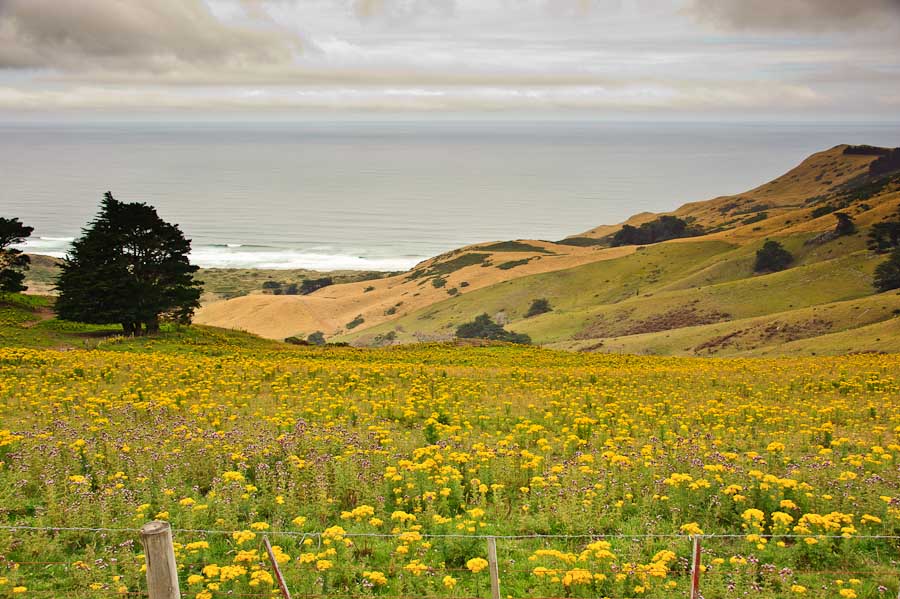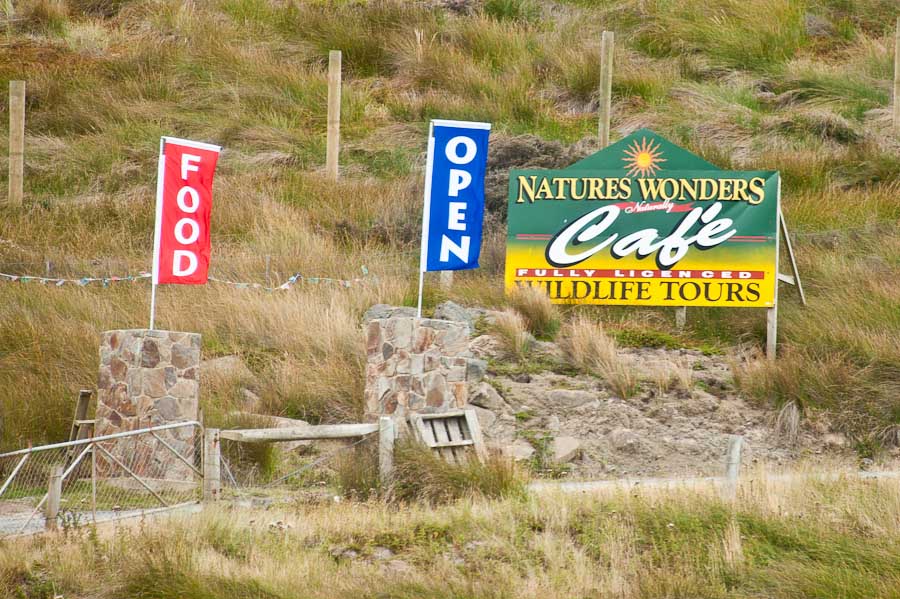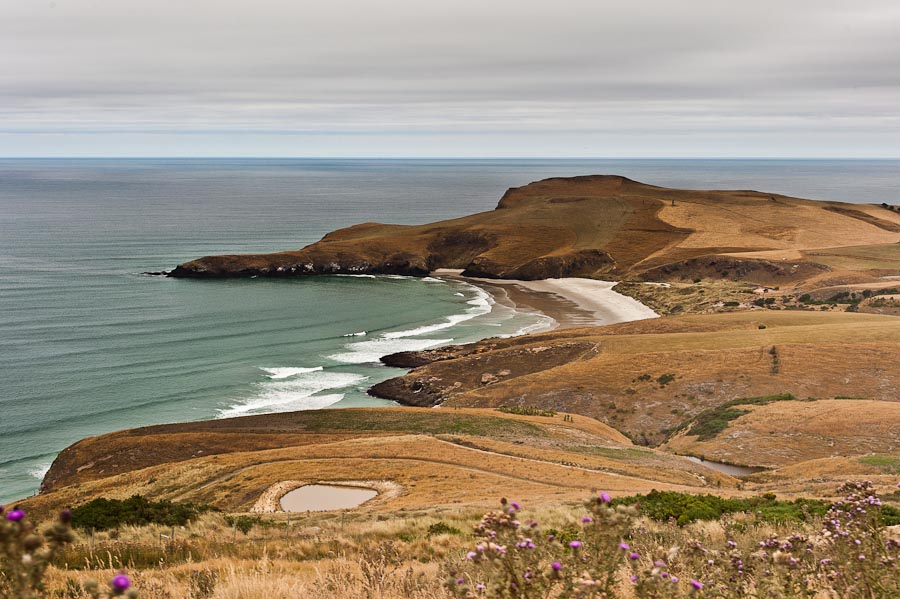Today is our last port in New Zealand and it is with a sad heart that we say good-bye to this beautiful country and its’ lovely people.
Our tour today is to a Nature’s Wonders park located at the very beginning of the long, narrow Otago harbor. As we climbed aboard our bus we noticed this one is a bit narrower than other coaches we’ve been on lately. The reason for that would become clear soon enough!
Click here for Dunedin Photo Gallery.
As we set out from the port the driver gave us some information on the town. Dunedin is the second-largest city in the South Island of New Zealand, and the principal city of the Otago Region. The name “Dunedin” is derived from Edinburgh, the capital of Scotland. These two cities have been officially twinned since 1974. Founded by the Presbyterian Free Church of Scotland in 1848, the city has retained much of its Scots heritage.
There are two ways to get to the end of Otago Harbor…the high road and the low road. Our driver opted to take us out on the “high” road…and it was spectacular! An amazing view from 1,000 feet above sea level – our knuckles were a bit white as we traversed the very narrow and windy road. At many points, traffic coming in the other direction had to stop and back-up to make room for our large bus to pass.
At one point we saw a man running up the road, he told our driver that a bicyclist had gone off the road. He said that the ambulance was on its way, so we made our way past the scene…it was pretty crazy. The bicycle was stuck on the wire fence that provided the only protection from falling off a 500 foot drop…we didn’t see the rider until we went around the next corner. Fortunately he landed on a narrow shelf about 20 feet below where his bicycle struck the fence. He was very, very lucky he crashed where he did…a few feet one way or the other and he would have had a much different landing.
This didn’t help our white-knuckle status as we continued for another 20 minutes to the park, which was located a few hundred feet above the ocean next to a Royal Albatross sanctuary. We kept our eyes peeled for the Albatross, which have a wingspan of 9 or 10 feet, but didn’t see any.
As we were getting ready to go out on the tour, we saw some folks that had just come in and they were covered from head to toe with dirt and dust! We didn’t realize we were going to get dirty on this tour, but not much we could do about it now. They provided heavy raincoats as protection from the dirt and we boarded the eight-wheel all-terrain vehicles. The ride was pretty rough, but not too bumpy due to the eight wheels working independently to smooth things out.
Our first stop was at a New Zealand Fur Seal rookery. We rode the all-terrain vehicles down to the water and got out to see about 40 Fur Seal pups! They were having fun hanging out and playing on the rocks and in the protected pools of water.
The next stop included a walk down, and through, a steep covered walkway (which was clinging to the hillside) where we had a chance to see yellow-eyed penguins and blue penguins. We did see the blue penguin, but the yellow-eyed penguins proved harder to detect. They were around, but well disguised in the bush.
Back on the vehicles, they took us to some beautiful lookout areas where we saw a lot of the sheep that live on the farm and they gave us the history on the area. The sanctuary is very important for the on-going success of these species. New Zealand has an interesting story…because they are an “island”, they have native plants and animals and then they have those that were brought in by immigrants, unwitting tourists, etc. Their worst unwanted critters are possums.
There are about 30 million possums in New Zealand – that’s about 7 possum per person! The first possums were brought to New Zealand in 1837 from Australia. In New Zealand possums have no natural enemies. The possum is doing a lot of damage to the native plants, animals and birds, causing some to come close to extinction. At sanctuaries like this one, the farmers actively trap the possums, which eat bird eggs and can kill seal babies. This gives a fighting chance to these species to get their numbers back to ensure their continuation.
Back on the bus, the driver took the “low” road (thankfully) and we rode along the bank of the harbor. It was low tide so the water was pretty far back off of the shore. While we were a little behind schedule, our driver insisted that we must see their train station. We had 5 minutes to walk around and take pictures and then we went back to the ship.
We have 3 sea days coming up as we make our way to the Southwest side of the South Island to cruise the fjords and then 2 days to cross the Tasman Sea. We’ll keep our fingers crossed the swell doesn’t get too big!
Photographers Comments:
Another dreary lighting day in Dunedin. Very similar to Akaroa in lighting and views for that matter. I did the best I could from the fast moving bus on windy, tight roads. Once again I used the D700 and 28-300. We were only at the train station for 5 minutes. There were definitely some great shots there with more time but I got a couple interesting ones. The downtown area would have been a great spot for street photography as there were lots of interesting characters and situations to shoot. But not from a bus going 40 mph unfortunately. Next time. A very nice city for shooting and on a sunny day, spectacular shots of the harbor I’m sure. Here are the best of the lot.



.jpg)



richard - Hey, Love the coats! Times must really be changing with you two. Margaret saying no to jewelry??